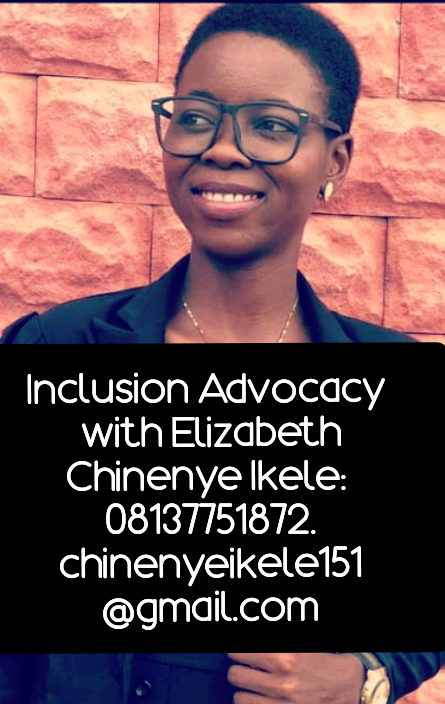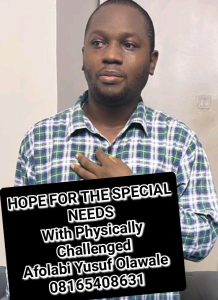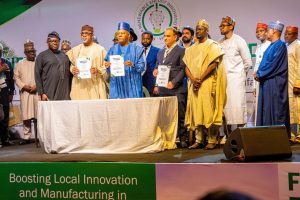
By embracing diversity and fostering understanding, we can create an inclusive society that values every individual’s contributions, regardless of their physical challenges.
As I approached the coffee brown door with the bold inscription ‘Manager’ printed on a blue plaque, my heart was a mix of excitement and anticipation. It was my first interview, and while nerves often accompany such moments, I felt a sense of purpose pushing me forward. Any doubts that might have weighed me down were clipped off my toes, replaced by the anticipation of the experience that awaited me behind that closed door.
When I knocked, a warm male voice responded, inviting me in. As I stepped into the office, I noticed the manager sitting behind an imposing mahogany desk, his small frame almost obscured by the furniture. His eyes immediately fell on the walking cane in my hand and my unsteady gait. I could see the fleeting expressions on his face—a mix of surprise and skepticism that seemed to communicate, “What’s she looking for?”
“Good morning, sir,” I greeted, forcing a smile as I approached his desk.
“Yes, good morning, young lady. How may I help you?” he replied, his tone polite yet distant.
“My name is Elizabeth, sir, and I’m here for the interview,” I said, my voice steady despite the tension in the room.
His forehead furrowed, and I could sense the gears turning in his mind. “Interview? Which interview?”
“Sir, I’m the lady you spoke with on the phone yesterday about the teaching position. You asked me to come today with my documents.”
“Oh!” he exclaimed. The disappointment in that expression was unmistakable. It was clear he struggled to connect the vibrant and brilliant voice he had spoken with over the phone to the cane-clutching, limping, yet smartly dressed woman standing before him. I smiled to myself, having grown accustomed to such reactions.
“Okay. You may sit down,” he finally said. For once I thought that would never come.
As I handed him my documents, he put on his glasses and began to sift through each paper, his demeanor shifting slightly. The questions came: my previous teaching experiences, my knowledge of classroom management, and my approach to class control. I answered each one confidently, eager to showcase my qualifications. But I knew the question lingering at the back of his mind would come soon.
“What happened to you?” he finally asked, a hint of curiosity lacing his tone.
“An accident, sir,” I replied, my heart sinking. I could see the unasked questions forming in his mind. But he swallowed them back, letting out a sigh instead. Our conversation shifted back to business, and he concluded with the usual, “We will get back to you.
”It’s been over three months since that day. I’ve since moved on to another teaching position, where my skills have been recognized, and my friend often tells me I’m one of the best English teachers the previous school never had. Yet, I can’t help but wonder: Would my experience have been different if I hadn’t faced a mobility challenge?
Unarguably, ours is a society that tends to measure worth by what is visible. Too often, individuals with disabilities are judged based on preconceived notions rather than their abilities. In my case, the manager’s initial perception of me was colored by my physical appearance, overshadowing the qualifications and passion I brought to the table.
This pattern isn’t just a personal experience; it reflects a larger societal issue. Many capable individuals with disabilities are passed over for opportunities because people focus on visible limitations instead of recognizing potential contributions. This tendency is not just disheartening; it’s a significant loss for organizations that fail to embrace the diverse talents available to them.
I remember sitting in my new classroom, inspired by the enthusiasm of my students, and feeling a sense of belonging that was often elusive during my job search. I realized that while my disability shaped my experiences, it did not define my capabilities. Teaching is not merely about imparting knowledge; it’s about connecting with students, understanding their needs, and fostering an environment where everyone can thrive.
However, the journey hasn’t been without its challenges. There are still moments when I encounter skepticism or doubt from others. Some people still see my walking cane before they see me, and their reactions can range from pity to patronizing comments. These moments can be exhausting, but they also fuel my determination to prove that ability comes in many forms.
To create an inclusive society that truly meets the needs of persons with disabilities, we must focus on accessibility, understanding, and encouragement. This means not only making physical spaces more navigable but also fostering an environment where individuals with disabilities are empowered to harness their unique abilities. Employers, educators, and community leaders must work together to break down barriers and challenge stereotypes, ensuring that everyone has the opportunity to shine.
It is crucial for society to shift its perspective. We need to recognize that people with disabilities possess unique talents and insights that enrich our communities. By embracing diversity and fostering understanding, we can create an inclusive society that values every individual’s contributions, regardless of their physical challenges.
My story is just one of many, and I hope it serves as a reminder that disabilities do not equate to inability. As we move forward, let’s strive to challenge stereotypes and advocate for a world where everyone is seen for their true potential. Together, we can build a society that celebrates all abilities, ensuring that opportunities are accessible to everyone, regardless of their circumstances. By nurturing an inclusive environment, we can encourage individuals with disabilities to harness their abilities and contribute meaningfully to our collective future.
About The Author








